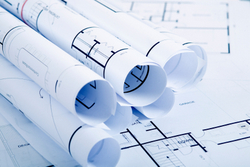
Three architectural firms have submitted designs for a new Biomedical Research Building for Northwestern University Feinberg School of Medicine and the University is now seeking community input on the proposed designs.
The three finalists in the design competition for the new Biomedical Research Building are:
- Goettsch Partners, Chicago, and Ballinger, Philadelphia
- Perkins + Will, Chicago
- Adrian Smith + Gordon Gill Architecture, Chicago, and Payette, Boston
From November 7-12, architect’s renderings, floor plans, and models developed by each of the three finalists will be on display in the lobby of the Robert H. Lurie Medical Research Center, 303 E. Superior St. Comment cards will be available there.
The Lurie Medical Research Center is open Monday through Friday from 7 a.m. to 7 p.m. Additionally, the Lurie Medical Research Center will be open while the Streeterville Organization of Active Residents holds its Artisan Market in the building on Saturday, November 9 from 10 a.m. to 5 p.m. and on Sunday, November 10 from 10 a.m. to 4 p.m. The design competition entries will be available for viewing during those times.
“The designs offer thought-provoking concepts that the University is reviewing and evaluating carefully with a great deal of input,” said Eugene S. Sunshine, senior vice president for business and finance. “We will construct a building that will be a great addition to our campus, to the neighborhood, and to the City of Chicago.”
All of the materials, including an email address for comments, will also be available on the web.
Northwestern’s Board of Trustees will make the final selection of the winning design.
The new Biomedical Research Building will be located immediately east of the Lurie Medical Research Center on the site of the former Prentice Women’s Hospital. Northwestern plans to construct approximately 600,000 square feet of research space starting in 2015 with eventual buildout of approximately 1.2 million square feet.
The new Biomedical Research Building will anchor the University’s research facilities and be the hub of a world-class research and development enterprise that attracts innovation and entrepreneurship. Construction of the new state-of-the-art center will create thousands of jobs, help find tomorrow’s cures, and generate approximately $3.9 billion in economic activity in Chicago in the coming decade.






